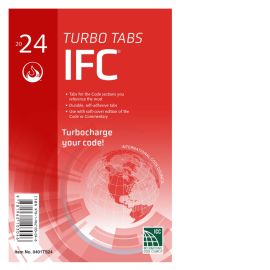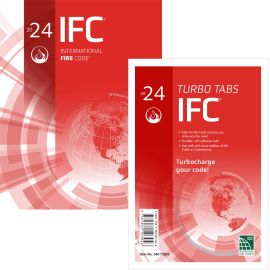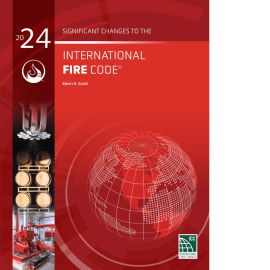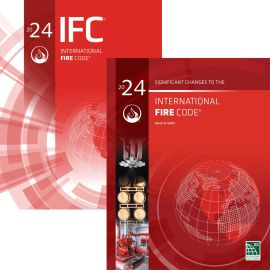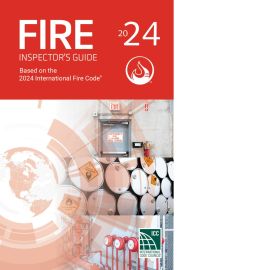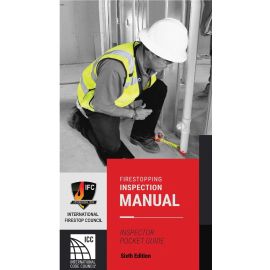2024 International Fire Code®
The 2024 International Codes® (I-Codes®) have undergone substantial formatting changes as part of the digital transformation strategy of the International Code Council® (ICC®) to improve the user experience. The changes, promoting a cleaner, more modern look and enhancing readability and sustainability, include:
- Single column text format and modernized font styles improves readability
- QR Codes replace vertical margin sidebars and arrows to identify code changes more accurately
- Shading for table headers and notes improves locating tables and applicable notes
- Grouping of associated content brings tables and figures immediately after the parent section.
The 2024 IFC® contains regulations to safeguard life and property from fires and explosion hazards. Topics include general precautions, emergency planning and preparedness, fire department access and water supplies, automatic sprinkler systems, fire alarm systems, special hazards, and the storage and use of hazardous materials. Key changes to the IFC include:
- Energy Storage Systems (ESS). Continued focus on ESS. Now referencing NFPA 855 along with IFC Section 1207 to regulate Energy Storage system. The provisions continue to evolve with technologies.
- Lithium-ion batteries. Research, storage, and manufacturing of such technologies are being regulated through active systems including automatic sprinkler systems and detection requirements along with proper overall building design and construction. The IFC contains a specific section to provide tools to manage the collection of lithium-ion batteries.
- Powered micromobility devices. A section dedicated to the hazards associated with charging such devices are addressed in the IFC. This includes a number of requirements focusing on issues such as product listings, separation requirements, and use of detection systems.
- Carbon Monoxide (CO) detection. The 2024 IBC and IFC now require CO alarms or detection systems for all types of occupancies. Previously the focus was only on residential and schools.
- A2L refrigerants. The IFC and IBC now acknowledge the need for the use of A2L (flammable) refrigerants but in a safe and well-regulated way. The code now acknowledges two hazard levels for flammable gases based upon the Global Harmonized Standards (GHS).
- Distilled spirits and wine storage. Fire protection requirements have been further refined based upon data from FM Global.
- Valet trash. Valet trash collection is now permitted only where approved. The owner and valet trash collection service provider are required to comply with the rules and limitations that are established by the jurisdiction. Appendix O has been added to provide requirements for adoption.
- Inflatable amusement devices. Section 3107 has been added to provide requirements for these devices.
- Temporary Heating and Cooking Operations. A new Chapter 41 provides all the requirements, including some relocated from other chapters in the 2021 edition, that address temporary heating and cooking operations.
- Emergency Responder Communications Enhancement System (ERCES). Provisions in Section 510 have been updated to match the latest terminology and technology being used for ERCES. In addition, NFPA 1225-2022 Standard for Emergency Services Communications, is now referenced.
| Description: Links | |
|---|---|
| Pages | 664 |
| ISBN | 978-1-959851-66-0 |
| Publisher | ICC |
| Code Year | 2024 |

